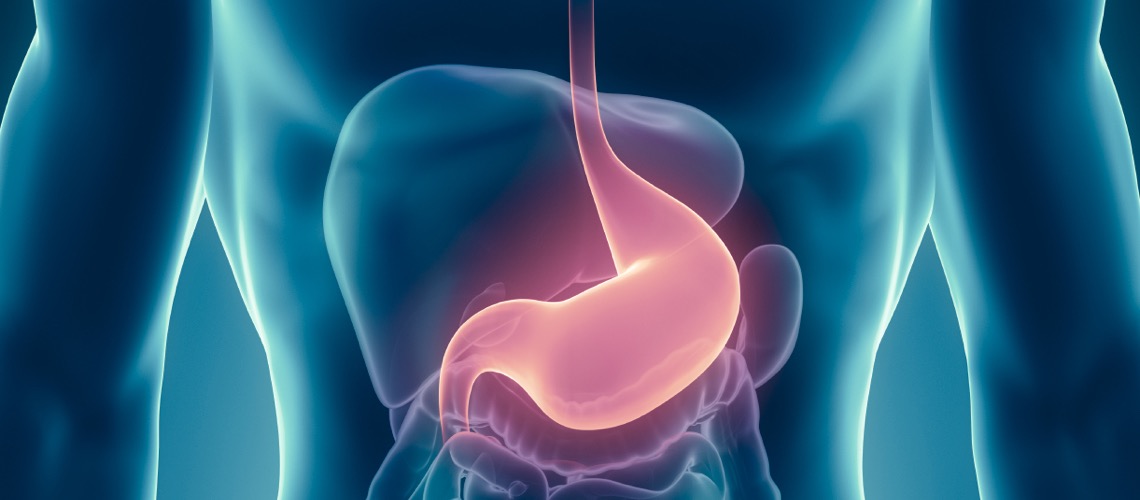Contents of the stomach rising into the esophagus cause inflammation and discomfort or burning pain behind the breastbone, also known as heartburn. If untreated, the illness may develop into GERD - gastroesophageal reflux disease.
The lower esophageal sphincter, as we call the complex mechanism that prevents contents of the stomach from returning into the esophagus, is actually not a sphincter in the anatomical sense. It is a group of anatomical and functional factors that together prevent excessive returns of the contents of the stomach into the esophagus. The mechanism is situated between the esophagus and the stomach and is tightly closed most of the time. When food or liquids are being swallowed, the sphincter opens as the bolus travels by primary peristaltic wave to the lower esophagus (the sphincter also opens during vomiting). After the food enters the stomach, the sphincter closes. If the opening is permanently open or does not close tightly enough, contents of the stomach flow back into the esophagus (reflux), causing inflammation of the esophageal mucous membrane and a burning sensation behind the breast bone. Occasional heartburn is not dangerous, but complications can develop if problems are repeated, persistent and untreated.
The main cause of heartburn is a weakened antireflux mechanism between the esophagus and stomach. The reason is unknown. The most common cause of a weakened antireflux mechanism is a sliding hiatal hernia whereby the junction between the esophagus and stomach travels trough the opening in the diaphragm from the abdomen up into the chest and back. Certain types of food, such as tomatoes, citruses, onion, garlic, chocolate, coffee and alcohol weaken the antireflux mechanism, as can fatty foods and certain medicines. Stress and smoking are important contributing factors for GERD, increasing the quantity and acidity of stomach fluids and causing heartburn.
Common and long lasting occurrences of reflux result in inflammation of the esophagus (esophagitis). Long lasting irritation of the mucous membrane creates ulcers and narrowing of the esophagus and even bleeding. Such changes pose a risk for the development of esophageal cancer.

Gastroesophageal reflux disease (GERD)
GERD is a common illness with many symptoms: a burning sensation behind the breast bone, occurring especially after eating and lasting from a few minutes to several hours, return of acid and food into the esophagus and mouth, bad breath and discomfort in the mouth, problems during swallowing - sensation of food stopping in the esophagus, pain during swallowing. This can lead to coughing, inflammation of the throat and hoarse voice. The exact reasons are not known, but the risk factors for the occurrence of GERD are:
Food - eating excess amounts of food, certain foodstuffs - such as onions, chocolate, fatty foods, sour fruit, tomatoes, alcohol, sour or carbonated beverages and coffee and eating before sleep.
Poor habits - smoking, excess weight, wearing constricting clothing, rest immediately after eating.
Health related reasons - pregnancy, hiatal hernia, allergies and neurological disorders affecting certain muscles in the body, taking of certain medicines, particularly antibiotics and Aspirin.
Diagnosis
The doctor diagnoses the condition based on symptoms, physical examination and certain additional tests, including an endoscopic examination of the upper digestive tract, x-ray of the esophagus and stomach and manometry and pH-metry of the esophagus with impendance.
An endoscopic examination of the upper digestive tract (esophagogastroduodenoscopy, EGD) is used by a physician to visually inspect the interior of the esophagus, stomach and duodenum. It consists of a bendable instrument with a light source and camera at its tip being fed into the mouth of the patient.
An x-ray image of the esophagus and stomach establishes the presence of a hiatal hernia and shows the peristalsis of the esophagus and evacuation of the stomach.
Esophageal manometry is a procedure used to measure the strength of peristalsis in the esophagus and pressure in the area of the antireflux mechanism. The procedure is performed by feeding a thin tube through the nose into the esophagus. Together with 24 hour measurement of pH with imendance it shows reflux episodes and establishes a causal link between reflux events and signs of illness.
Treatment
GERD is treated with a combination of medication and lifestyle changes. If problems persist or even intensify, a surgical intervention is advised. The change in lifestyle is very important and it is key that the patient continues making better lifestyle choices even after surgical treatment. Avoiding food two to three hours before sleep is one of the first rules to obey. This allows the stomach to empty and the level of stomach fluids to reduce. It is also advised to rest with the upper body in a raised position. This makes it harder for stomach fluids to flow back into the esophagus. Frequent small meals also aid in controlling the release of stomach acids. Patients need to observe the dietary rules and avoid certain foods and drinks. Another approach to the treatment of GERD is medication. Your physician will prescribe proton pump blockers that reduce acidity and amount of stomach fluids.
Surgery (laparoscopic antireflux procedure) is indicated when other methods of treatment do not work or if the illness repeats or persists over a longer period of time. The surgical procedure aims to prevent the development of changes in the mucous membrane of the lower esophagus and improve the quality of life.
Attachments
- Antirefluksna operacija (GERB)-navodila pred in po operaciji.pdf (PDF, 840.71 kB)